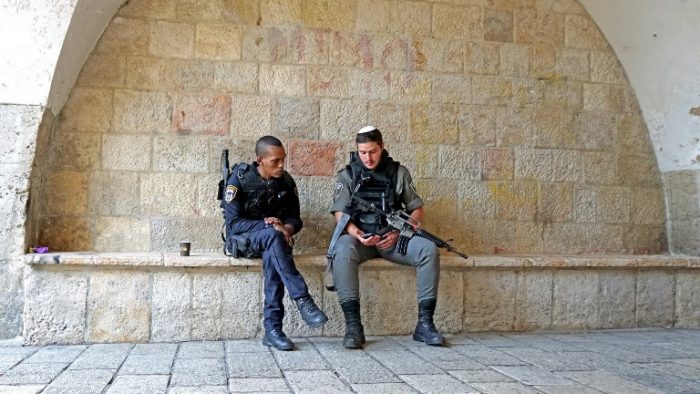Constance Duncombe, e-ir.inf

[Uncaptioned] Image by Dennis Jarvis
Excerpt:
In July 2018, US President Donald Trump further undermined already shaky relations with Iran by tweeting to Iranian President Rouhani that the US would ‘no longer stand for your demented words of violence and death. Be cautious!’. This all-caps threat quickly became a meme, with many Twitter users – including Iranian Foreign Minister Javad Zarif – parodying Trump’s tweet. Political pundits debated whether, contrary to the violence inherent in Trump’s tweet, this statement might in fact signal US moves towards reinvigorating the nuclear deal. For instance, previous pejorative tweets about Kim Jong-Un had eventually unfolded into the first summit meeting between the US and Democratic People’s Republic of Korea in Singapore the previous month. Others have highlighted how such communication has undermined the strength of the liberal world order, which may also provide new opportunities for ordering of a different kind. What is often overlooked in such accounts, however, is how the interplay of representation and recognition continues to undermine positive moves towards rapprochement, and not just within Iran-US relations. This is not to imply that there is a correct process of recognition, nor that representing ourselves and others in different, more optimistic ways will result in decreasing conflict. Yet we must pay attention to processes of recognition precisely because their dynamics are so powerful. RecognRecognition is fundamental to global politics: it provides a positive affirmation of identity that maintains an actor’s self-esteem. Such affirmation suggests that an actor’s identity has worth and value, providing a sense of security in its interactions with others (Nel, 2010; Ringmar, 2012: 7; Wolf, 2011). Representation plays a crucial yet underexplored role in these identity politics dynamics (Doty, 1996: 164; see also Campbell, 1998: 169–170). We all think about ourselves in a particular way, and when we think of others we do so in a similar fashion. We use representations – the production of meaning through language, symbols or signs, a conveyance of something – to imagine who we are and how we want to be recognised. States are also subject to the challenges of representation: they use representation to understand not only themselves and others, but to respond to externally constructed images of who they are. Recognition is therefore not an inevitable outcome of state interaction; rather, it relies on one actor granting it to another (Duncombe 2016).
Representation and recognition are ultimately about power. How Iran and the US, or any other states for that matter, represent themselves and each other influence the ways in which they relate and the foreign policy options each believe are possible. As a result, positive steps towards compromise or reconciliation can be undermined by mistrust fostered by such entrenched representations.
More and more scholars are examining recognition in world politics (Ringmar 2002; Haacke 2005; Murray 2010; Lindemann 2011). From work on Sino-Japanese relations (Gustafsson 2015), to humour and Israeli public diplomacy [JB emphasis](Adler-Nissen and Tsinovoi 2018), to critical pedagogy (Schick 2016), emerging literature reaffirms the importance of recognition to the development of empathy and love, the normalization of foreign relations or, alternatively, how misrecognition is frequently at the centre of acrimonious interstate relationships (Aggestam 2015; Brincat 2017; Greve 2017). Even Francis Fukuyama (2018), it seems, believes recognition to be the ‘master concept’ for explaining current world politics. Yet greater attention needs to be paid to two key areas: firstly, the new technology facilitating the dynamics of representation and recognition, and secondly, the visual politics inherent in how processes of recognition, and misrecognition, unfold.
My aim in this brief piece is to outline the importance of these two key areas – technology and images – to recognition studies, illustrating how further questions about recognition in International Relations are emerging, and what we might do to best address them.ition requires greater consideration than is often given in International Relations. ...
Explorations of identity and difference have continued to illustrate how important images are to representations of Self and Other. Consider the Israeli public diplomacy campaign ‘Presenting Israel’, which utilised videos parodying common misrepresentations of Israel as a mobilization strategy for public diplomacy by ordinary citizens travelling abroad (Adler-Nissen and Tsinovoi 2018). As Rebecca Adler-Nissen and Alexei Tsinovoi demonstrate (2018), this campaign used videos and associated social media platforms to exaggerate and poke fun at stereotypes of Israel and Israelis, using humour to represent certain aspects of Israeli identity and challenge criticism of Israel. Consider as well pop culture as a site for exploring the construction of Self and Other. Priya Dixit (2012) uses the long-running and popular television series Doctor Who to illustrate how identity is structured through relations of similarity and difference, and how this, too, may offer a re-imagination of difference represented as ‘threat’ or ‘danger’. ...
ReferencesAdler-Nissen, Rebecca, and Alexei Tsinovoi. 2018. “International misrecognition: The politics of humour and national identity in Israel’s public diplomacy.” European Journal of International Relations DOI 1354066117745365. ...
No comments:
Post a Comment